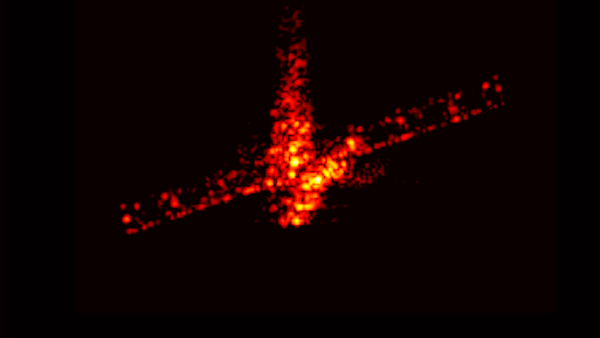OK, it’s official — everyone hates San Francisco’s self-driving taxi fleet. Or at least so it seems, if this video of someone vandalizing a Cruise robotaxi is an accurate reflection of the public’s sentiment. We’ve been covering the increasingly fraught relationship between Cruise and San Franciscans for a while now — between their cabs crashing into semis and being used for — ahem — non-transportation purposes, then crashing into fire trucks and eventually having their test fleet cut in half by regulators, Cruise really seems to be taking it on the chin.
And now this video, which shows a wannabe Ninja going ham on a Cruise taxi stopped somewhere on the streets of San Francisco. It has to be said that the vandal doesn’t appear to be doing much damage with what looks like a mason’s hammer; except for the windshield and side glass and the driver-side mirror — superfluous for a self-driving car, one would think — the rest of the roof-mounted lidars and cameras seem to get off lightly. Either Cruise’s mechanical engineering is better than their software engineering, or the neo-Luddite lacks the upper body strength to do any serious damage. Or maybe both.
Trouble this week for Apple as well, at least in France where regulators have ordered the company to halt sales of its iPhone 12 over concerns about excess radiation emissions. The Agence Nationale des Fréquences (ANFR), which appears to be the equivalent of the US Federal Communications Commission but with so much more class, says that an “accredited lab” measured absorption of electromagnetic energy and measured the popular smartphones emit at 5.74 Watts/kg, well in excess of the EU’s 4.0 W/kg limit. We haven’t seen any specific technical details on what specific frequencies are being emitted or how the tests were run, but the excessive level seems to come from a test that simulates holding the phone or keeping it in a pocket, so that’s pretty intimate contact. The phone did pass a test that simulates absorption at a 5 cm distance, where the limit is 2 W/kg, but that seems like cold comfort since most of us are in direct contact with our phones most of the time. It’ll be interesting to see what’s behind this test and how Apple plans to remedy these phones.
Score another win for technology after a hiker in Alaska used a wildlife camera to get himself unlost. The story doesn’t have much information about the hiker, but the incident occurred on Dumpling Mountain in Katmai National Park, where a camera live streams the comings and goings of wildlife, primarily the local bear population. The hiker, clearly underprepared for the charming late summer weather of southern Alaska, wandered across the camera and mouthed the words “Help me” and “Lost” into the lens. Thankfully, the camera has a faithful following of bear watchers, who used the live stream chat to notify the National Park Service, who sent rangers out to lend the guy a hand. We’re glad everything worked out, but we’re left wondering what the camera is using for broadband, since the hiker apparently didn’t have cell service.
If you’ve ever wondered what it looks like inside a CPU while it’s doing its thing, you’ll want to check out this incredible interactive Z80 simulator. The simulator recreates the inner workings of the 8-bit chip that powered everything from the TRS-80 to Pac-Man, and traces out exactly which lines go high as the machine executes instructions. You can single-step the program and even half-step it, or you can just let it rip to run at full speed — apparently not actual clock speed, though, even at the slowest 2.5-MHz variant. It’s pretty cool to see what’s actually going on at the transistor level, and pretty instructive as well.
And finally, from the “What goes up must come down” files, the European Space Agency (ESA) recently decommissioned its aging Aeolus satellite but gave it one final mission before its fiery end. Aeolus, launched in 2018, used a Doppler lidar to study winds on Earth, and is the first satellite in history to use “assisted reentry” to end its own life. Back in July, ESA controllers commanded the satellite to use the rest of its fuel to lower its orbit. A radiotelescope in Germany took a series of eight radar images of the spacecraft as it began to feel the rough embrace of the atmosphere, resulting in the stunning image below. We were a little disappointed to learn this wasn’t an optical image; seeing a satellite actually start to heat up and burn in the atmosphere with this kind of resolution would be pretty cool. But it’s still a great sendoff to a valuable mission.


















Thankfully the wildlife camera didn’t show a bear mouthing “that was a great meal!”
Hero or Villain?
How about Jerk?
“The simulator recreates the inner workings of the 8-bit chip that powered everything from the TRS-80 to Pac-Man, and traces out exactly which lines go high as the machine executes instructions.”
Apparently it didn’t give us the TRON 2.0 view of the chip.
https://en.wikipedia.org/wiki/Tron_2.0
alaska actually has pretty good internet, i figure mostly from the fact that the fiber isnt as congested as it is in more densely populated areas. ping times in games are still a little high, but thats more to do with distance than the quality of the networks. here in se alaska i think we tap into a major trunk line.